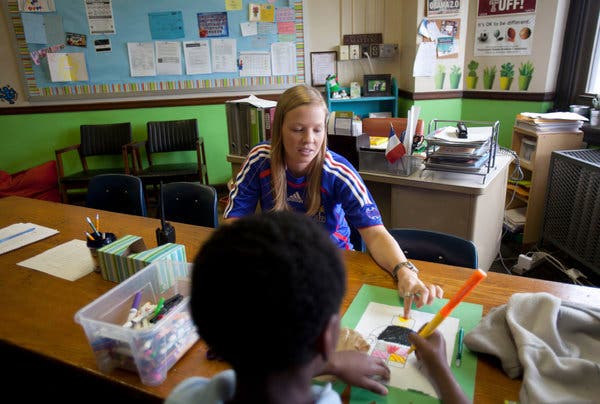
Education budget cuts have become an unfortunate reality for many school districts across the United States. As states struggle with budget deficits, education funding often takes a major hit. While cutting education budgets may provide short-term financial relief, the long-term impacts on schools, teachers, and students can be devastating.
Cuts to School Programs and Services
One of the first areas that school districts target when making budget cuts is extracurricular activities and programs. Sports, music, art, and after school programs are often the first to go. For example, in 2011, the Los Angeles Unified School District cut all middle and high school sports programs to save $4.5 million. These cuts left thousands of students without access to sports.
Academic intervention and enrichment programs, such as summer school and tutoring, also frequently face reductions. These programs play an important role in providing additional academic support to struggling students. Without these services, at-risk students can fall further behind.
Schools may also be forced to cut back on counseling, nursing, and library services. This directly impacts students’ health, safety, and learning. As American Federation of Teachers President Randi Weingarten stated, “Budget cuts force schools into impossible choices about programs and services that all parents want for their kids.”
Larger Class Sizes
In order to reduce personnel costs, many school districts are increasing class sizes. This causes classes to become overcrowded and makes it more difficult for teachers to provide individual attention to students. Extensive research shows that smaller class sizes lead to improved academic outcomes, particularly in the early grades. Increased class sizes negatively impact learning, especially for at-risk students.
For example, in Chicago in 2013, district officials made the decision to increase classroom sizes to more than 30 students per class in an effort to save $100 million. Teachers and parents protested the move, but the cuts went through. Chicago teachers reported that larger class sizes resulted in them spending less time planning creative lessons and interacting with individual students.
Teacher and Staff Layoffs
Teacher and staff layoffs are perhaps the most damaging result of education budget reductions. Districts are forced to cut teaching and administrative positions, leading to larger class sizes and fewer classes offered. Younger teachers are often disproportionately affected by layoffs since districts typically lay off based on seniority.
Losing teachers means schools are unable to provide instruction in subjects like foreign languages, music, and art. North Carolina schools lost nearly 4,500 education jobs in 2011-2012. As a result, district officials reported they could only provide the minimum education required by law.
Teacher layoffs also mean increased unemployment for educators. In 2010 alone, over 275,000 education jobs were cut in the U.S. This had a disastrous impact on the education field. As education expert Diane Ravitch explained, “These layoffs affect the school community in ways that are seldom appreciated. Everyone focuses on the victims, but there are thousands more who remain behind, with increased workloads and decreased morale.”
Deferred Maintenance and Repairs
When money gets tight, school maintenance is an area that is often neglected. Buildings fall into disrepair, repairs are put off, and cleaning services are reduced. This creates unhealthy environments for students. For example, broken air conditioners lead to classroom temperatures in the 90s. Cracks in ceilings and walls go unfixed. Paint chips, dust, and mold problems worsen. Rodents and insect infestations persist. These conditions directly impact the learning environment.
Deferred maintenance also leads to long-term increases in repair costs. Putting off repairs now often leads to more extensive and expensive fixes later on. The American Society of Civil Engineers estimates the cost of bringing school buildings up to a good condition is $382 billion dollars nationally as of 2020.
Impacts on Students
Ultimately, education budget cuts negatively impact students more than any other group. Losing arts, music, sports, and extracurricular activities reduces educational engagement and school spirit. Students receive less individual attention and academic support. Their school days are less fulfilling, and they have fewer opportunities to explore passions and interests.
Education cuts also lead to fewer resources for students. Old worn-out textbooks are not replaced. Technology and lab equipment is not upgraded. College and career counseling services are reduced. Schools simply do not have the funds to invest in providing students with the tools they need for success.
Most importantly, budget cuts threaten the quality of education and instruction students receive. This can have long-term consequences on student achievement and outcomes. Students in districts with reduced services are less likely to graduate high school and attend college. Education budget cuts truly diminish opportunities for the next generation.
Moving Forward
Education budget cuts have significantly damaged schools across the nation. While budgets are beginning to rebound from the Great Recession, many districts still face funding shortages. Both state and federal governments need to prioritize education investment to reverse budget cuts. Schools require adequate funding to provide students with a quality education that prepares them for the future. Investing in education will ultimately benefit society as a whole.









